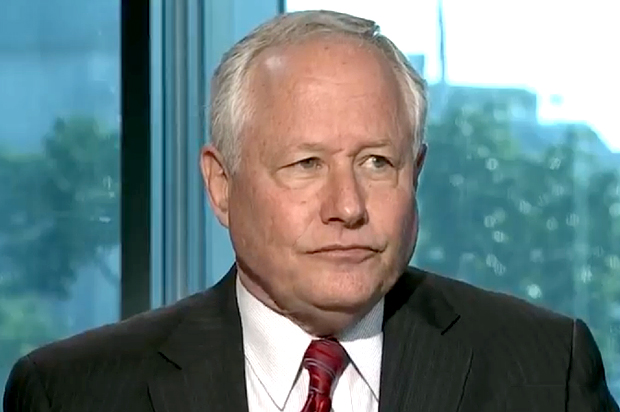The movement to find a third-party “independent conservative” candidate to run as an alternative to Donald Trump has always been more about the illusion of movement than actual, tangible progress. It started as a hashtag – #NeverTrump – that spawned a lot of tweets and provided a brief rallying point for Trump’s desperate Republican opponents who dropped the cause once it ceased to be useful to their own ambitions. Then it transmogrified into The Search For A Candidate, in which Republican and conservative luminaries of steadily decreasing influence and popularity were publicly and privately encouraged to run a doomed protest campaign for the White House. That search culminated with the brief and hilarious 2016 buzz surrounding National Review writer David French, who politely declined to be scraped from the candidate barrel’s bottom.
This has happened for over three months now, and throughout the process there have been many memos drafted, many tweets sent, and many newspaper profiles written, but there hasn’t actually been any progress made.
Now the movement has adopted a new, still less credible posture as it seeks merely to justify its continued existence. The New York Times reported this morning on the launch of a new non-profit group called Better For America, which is the brainchild of former Mitt Romney bundler John Kingston. The goal of the group is not to find a candidate to run on a third-party ticket, but to demonstrate that a scenario exists in which an independent candidate could still run. Per Better For America’s website: “A coalition of concerned citizens, working with the best political and legal talents in the country, has designed a Constitutional path to get a viable independent candidate on ballots all across the country.”
Better For America is doing this because the most implacable enemy the anti-Trump, anti-Clinton coalition of conservatives face is the calendar. Any candidate who wants to run as an independent has already missed the ballot access deadlines for Texas and North Carolina, which means they’ve already lost 53 electoral votes from two states that any conservative candidate cannot afford to lose. The deadline for collecting 25,000 signatures to get on the Illinois ballot is in less than two weeks. Signatures for Indiana and New Mexico have to be turned in by the end of June. The deadlines for Georgia, Florida, Oklahoma, and South Carolina are all about a month away.
The message from Better For America is that while the organizational hurdles, extremely tight window, lack of enthusiasm, absence of political will, and dearth of money might seem too daunting, they’re actually not because you can’t discount the power of DREAMS:
With the right team and resources, an independent candidate for President of the United States can still get on state ballots across the country, and provide a path to the White House. Better For America believes that ballot access in all 50 states remains possible; in 48 states ballot deadlines have yet to pass and legal experts advise that strong avenues to ballot access remain in Texas and North Carolina.
So the group’s message to the as-yet unidentified independent candidate is that they still have a shot. Left unsaid, of course, is the fact that anyone who has seriously contemplated mounting a third-party run has almost certainly already considered the ballot-access question and concluded that it just isn’t workable. The issue has been at the forefront of the third-party push for some time now – way back in March, the New York Times reported that Weekly Standard editor William Kristol, the self-appointed mascot of the anti-Trump activist movement, “circulated a memo to a small number of conservative allies detailing the process by which an independent candidate could get on general-election ballots across the country.” That “process” has only grown more difficult in the three months that have passed, and now it also entails litigation in (at least) two separate states.
But again, this all about the illusion of movement. If this were a truly serious effort at securing ballot access, it would have started a long time ago and it would have significant resources behind it. But even the primary benefactor of Better For America, John Kingston, doesn’t sound too enthused about its future:
“We do not have to be boxed in by this Hobson’s choice moment of Evil No. 1 or Slightly Less Evil No. 2,” Mr. Kingston said, referring to the major parties’ presumptive nominees Mr. Trump and Mrs. Clinton.
He would not say how much he is spending, although he said it is “less than seven figures.”
“This doesn’t become real unless people get behind it.”
A good first step would be to get one person – a candidate – behind it, but despite all the tweeting, memo writing, and press releases, that goal remains stubbornly out of reach.

